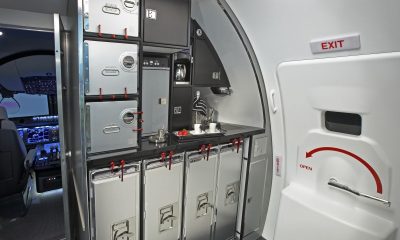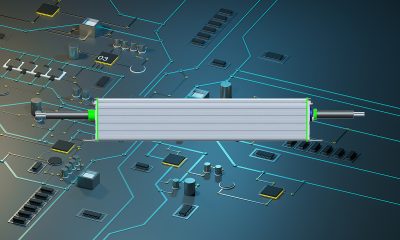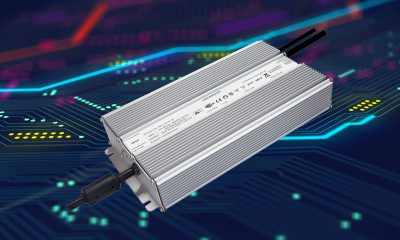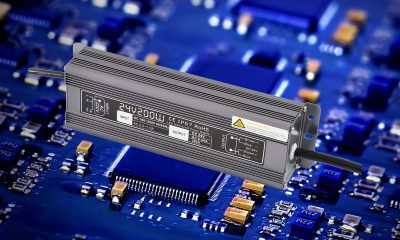What is an emergency LED driver
Emergency LED drivers are designed to provide backup power for self-contained emergency lighting products. Emergency lighting is provided to help ensure the safety of a building’s occupants upon failure of the normal utility power, the building’s electrical distribution system, or the accidental opening of circuit breakers. The emergency lighting system should provide dependable illumination to facilitate safe egress in the event of an emergency, to allow for hazardous procedures and critical tasks to be completed, and to deliver a feeling of safety and comfort for people remaining inside until the general lighting is restored. All commercial, industrial and public buildings such as schools, offices, hospitals, shopping centers, hotels, restaurants, theatres, cinemas, libraries, museums, passage terminals and factories are required by building codes and safety standards to provide emergency lighting in order to sufficiently illuminate internal and external means of egress so that a building can be quickly and safely evacuated upon the interruption of normal lighting. In these buildings, emergency luminaires are installed along the entire path of egress which include the exit access (the interior pathway), the exit (the exit doorway) and the exit discharge (the area immediately outside the building).
Emergency lighting
Emergency egress, anti-panic, safety and secondary lighting are accomplished using separate luminaires and wiring powered by a standby or emergency generator, common luminaires connected to both the regular utility and a central power supply (CPS) system, or self-contained emergency luminaires with each having its own backup battery. Small to medium sized installations, such as schools, offices, theatres, cinemas, retail stores and multi-unit residential buildings are often realms of self-contained emergency lighting because of its relatively straightforward installation. A self-contained emergency luminaire incorporates all the relevant components for activating and maintaining emergency lighting during periods when normal electrical power is available. Within the self-contained emergency lighting system, each luminaire can operate independently of all other luminaires due to the luminaire-level battery integration. In contrast, centrally powered emergency lighting systems arrange the secondary power source remote from the luminaire and require the use of fire resistant cables to ensure the high integrity of wiring. In addition to the considerable risk of loss of power due to fire damage, excessive voltage drop may occur as power travels through the wire over long distances.
LED technology
The rising popularity of self-contained emergency lighting systems can be attributed to the most recent evolution in lighting. Solid state lighting based on light emitting diode (LED) technology is dominating virtually all conceivable lighting applications. LEDs are forward biased p-n junction devices that produce white light as a result of electroluminescence and photoluminescence within semiconductor packages. Blue pump LEDs have a wall plug efficiency (WPE) that is significantly higher than incandescent and fluorescent lamps, which substantially reduces the electrical current drain on the battery and improves battery autonomy. The LED technology platform therefore enables longer durations for emergency lighting and minimized footprint of the battery system. The instant-on capability lends LEDs to applications where a ten-second interruption of lighting would constitute a hazard. LEDs have full range dimmability and can endure rapid cycling. This level of controllability makes it possible to operate the emergency luminaires with exceptional levels of energy efficiency, not possible with traditional technologies. Reduced maintenance costs from the use of long life LEDs are another killing advantage of switching to LED lighting.
Driver circuit configuration
An emergency LED driver works in conjunction with an AC LED driver to operate the LEDs as normal under mains healthy conditions and drive the LED load to provide code-required emergency illumination upon interruption of utility power. Upon detecting an absence of AC power, the automatic transfer circuit of the emergency LED driver will switch the load connection from the mains-powered LED driver to the DC/DC converter which draws power from a rechargeable battery pack to drive the LED load at a reduced light output for a minimum of 90 minutes. Upon restoration of utility power the load connection is reversed and meanwhile the battery recharged with mains power. The emergency driver is either built into the luminaire or connected via a remote enclosure in close proximity to the luminaire. A typical emergency LED driver includes a solid-state charger with automatic transfer circuit, a DC/DC converter, a 2-wire illuminated test switch (2W-ITS), LED charging indicator light, and a rechargeable battery pack. The battery is housed in the driver enclosure or remotely located. The battery chemistry can be nickel metal hydride (NiMH), nickel cadmium (NiCd) or lithium ion.














Loading...